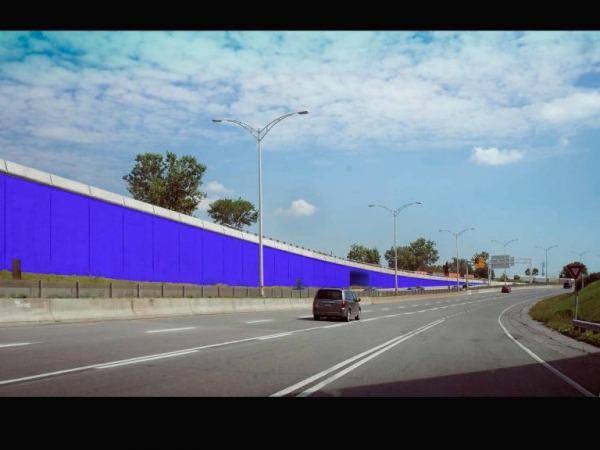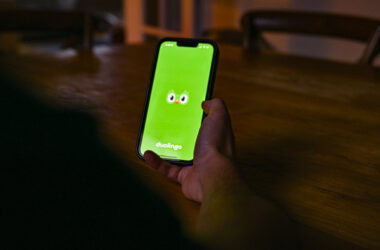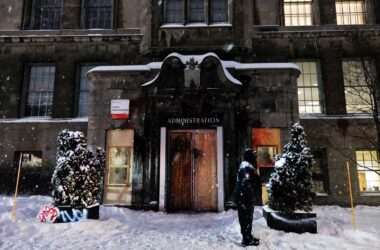Among the gaping potholes, crumbling concrete, and constant display of orange construction cones around Montreal, a different colour has sprung up around the Lachine area of Highway 20. Sound barriers and underpasses have been painted blue, little blue reflective signs have been stuck into the ground, and giant blue light fixtures have been installed along the highway. However, the art installation seems out of place and out of touch with the city, especially since it leads from the airport to downtown Montreal. It’s obvious that the project is more oriented to visitors than residents. For Montrealers, the main concern regarding Highway 20 is its safety—not beauty—since the infrastructure has been falling apart for years.
This new display of blue is actually a birthday present for Montreal, graciously given to the city by The National Bank. “Bleu de Bleu,” as the installation is called, is the brainchild of Montreal artist Alain Paiement. The project cost $3.2 million and took 20 workers 1,000 hours to complete over the time span of four months. Sadly, the project was poorly executed and does not reflect its hefty price tag. The money would have been better spent on fixing the crumbling concrete, which would have also had the desired beautifying effect.
The installation has three components that work together to convey that blue is the colour of water and the Quebec flag, as President and CEO of The National Bank, Louis Vachon, keenly pointed out. The first is the blue paint over an underpass and sound barriers. The underpass has been entirely covered in blue, holes and all, while the existing designs of the sound barriers have been painted in an array of shapes and designs. The second component of the installation are the 400 blue reflective panels that have been placed along seemingly unrelated areas of the highway and the Dorval circle. The third component is the 86 blue light fixtures that have been installed between 55th and 32nd Avenue, which either look a lot like lightsabers or something phallic. Luckily, these lights only use up as much energy as three regular street lights. This seems somewhat unnecessary, since lighting already existed along that particular stretch of highway.
Like a lot of decisions regarding Montreal’s crumbling infrastructure, this project has completely missed the mark. As Global News reports, the project focuses on incoming tourists rather than Montreal residents. Even more unfortunate is the fact that the blue underpass had lot of holes, which have become more obvious since the paint job. This is especially aggravating, since the $3.2 million project could have fixed the concrete, instead of just painting over it.
As for the art aspect of the project, this, too, fell flat. The blue that was chosen has a purple hue to it, neither representing water nor the colour of the Quebec flag. Additionally confusing is the fact that while the project is supposed to “evoke the shores of the St-Laurent River,” it is also supposed to convey music. Paiement was inspired by reggae, jazz, and classical music, which would have been the last genre combination I would have thought of upon looking at “Bleu de Bleu.” Then again, to be fair, my initial thought when I first set eyes on the blue underpass was that the city had added a protective coat on the concrete to shield it from the weather.
While one can commend The National Bank for wanting to bring life and art to a rather dull part of everyone’s day, the apparent focus on impressing incoming tourists over restoring vital infrastructure leaves one more annoyed than anything at the sight of “Bleu de Bleu.” Since the de la Concorde collapse in 2006, the structural problems of the Champlain Bridge, and the current rebuilding of the Turcot Yards, infrastructure has been a constant concern of residents, making this installation appear tone deaf and out of touch. And even if it is only supposed to be an art installation, with all the incredible murals on display in St-Henri and the recent addition to the Montreal Museum of Fine Arts, Montreal citizens expect better. Overall this was a great opportunity missed, for both the project and Montrealers.










Sooooo…. you’re asking that private investment fix potholes and concrete? Good luck with that.